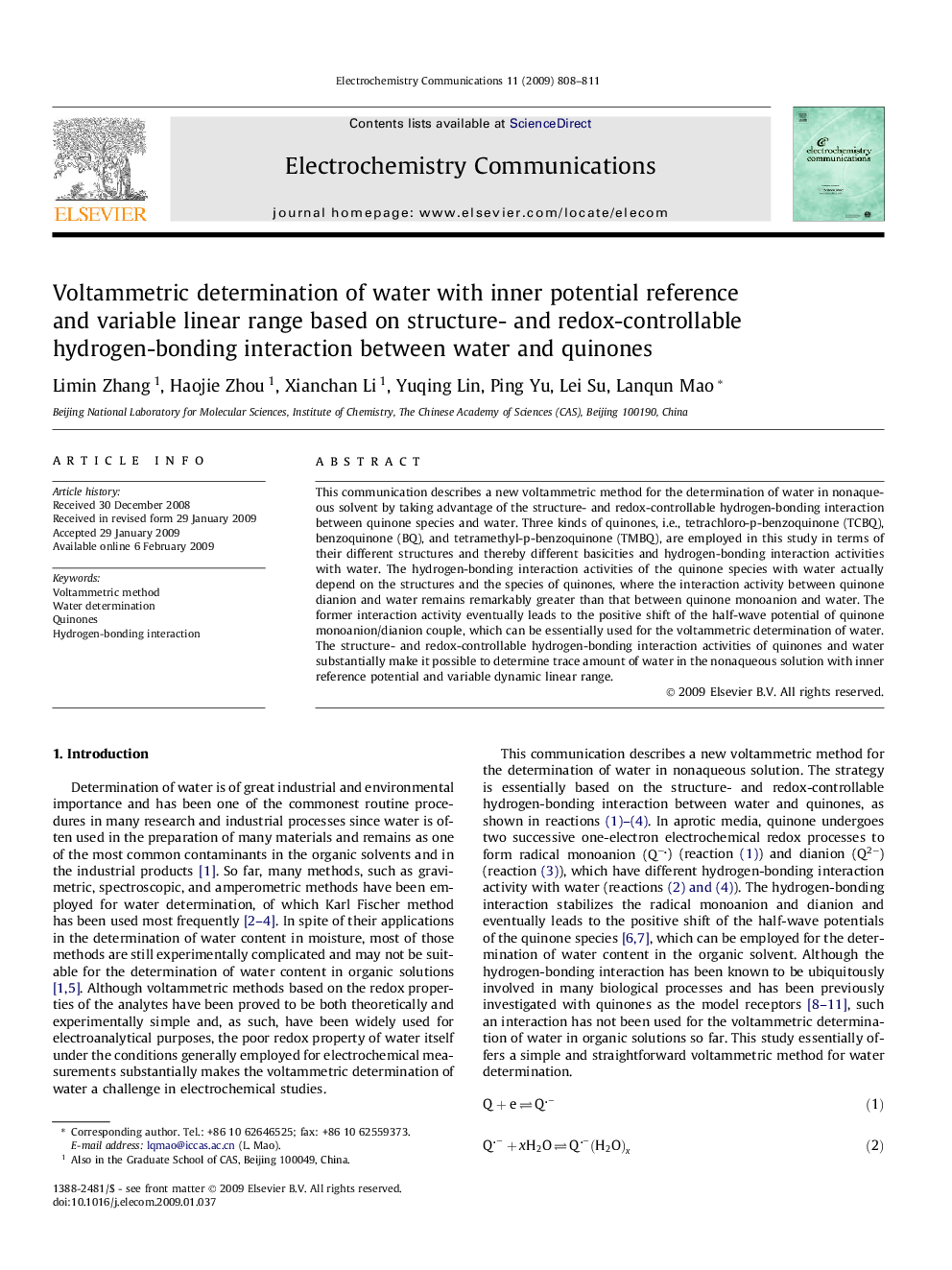| Article ID | Journal | Published Year | Pages | File Type |
|---|---|---|---|---|
| 181366 | Electrochemistry Communications | 2009 | 4 Pages |
This communication describes a new voltammetric method for the determination of water in nonaqueous solvent by taking advantage of the structure- and redox-controllable hydrogen-bonding interaction between quinone species and water. Three kinds of quinones, i.e., tetrachloro-p-benzoquinone (TCBQ), benzoquinone (BQ), and tetramethyl-p-benzoquinone (TMBQ), are employed in this study in terms of their different structures and thereby different basicities and hydrogen-bonding interaction activities with water. The hydrogen-bonding interaction activities of the quinone species with water actually depend on the structures and the species of quinones, where the interaction activity between quinone dianion and water remains remarkably greater than that between quinone monoanion and water. The former interaction activity eventually leads to the positive shift of the half-wave potential of quinone monoanion/dianion couple, which can be essentially used for the voltammetric determination of water. The structure- and redox-controllable hydrogen-bonding interaction activities of quinones and water substantially make it possible to determine trace amount of water in the nonaqueous solution with inner reference potential and variable dynamic linear range.
